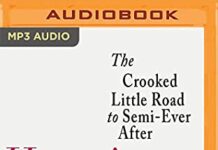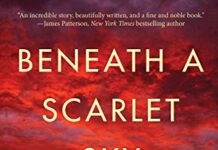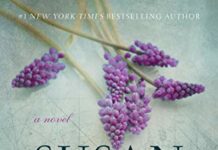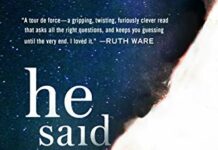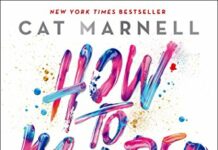
Ebook Info
- Published: 2017
- Number of pages: 462 pages
- Format: Epub
- File Size: 0.91 MB
- Authors: Joy Jordan-Lake
Description
A haunting and redemptive novel inspired by the heartbreaking true events that occurred at a church in Charleston, South Carolina, A Tangled Mercy examines the horrifying depths of human brutality and our enduring hope for forgiveness.
After the sudden death of her troubled mother, struggling Harvard grad student Kate Drayton walks out on her lecture―and her entire New England life. Haunted by unanswered questions and her own uncertain future, she flees to Charleston, South Carolina, the place where her parents met, convinced it holds the key to understanding her fractured family and saving her career in academia. Kate is determined to unearth groundbreaking information on a failed 1822 slave revolt―the subject of her mother’s own research.
Nearly two centuries earlier, Tom Russell, a gifted blacksmith and slave, grappled with a terrible choice: arm the uprising spearheaded by members of the fiercely independent African Methodist Episcopal Church or keep his own neck out of the noose and protect the woman he loves.
Kate’s attempts to discover what drove her mother’s dangerous obsession with Charleston’s tumultuous history are derailed by a horrific massacre in the very same landmark church. In the unimaginable aftermath, Kate discovers a family she never knew existed as the city unites with a powerful message of hope and forgiveness for the world.
User’s Reviews
Review A Goodreads Hot Reads Selection“Satisfying…[A Tangled Mercy] will appeal to admirers of Sue Monk Kidd’s The Invention of Wings.” ―Library Journal“A novel of secrets, racial tensions, family, and a love that withstands the passage of time, A Tangled Mercy is truly enthralling.” ―Historical Novel Society (Editor’s Choice)“Jordan-Lake brings us the aroma, taste, and view of Charleston as vividly as if we stood in the middle of the scene. The depth of emotion and veracity of the story sets this novel apart, as it brings a lost and critical piece of southern history to light. [It] is about the important things in our life―how art undoes our chaos; how history is part of our present; and how defiant love and forgiveness conquer hatred and bigotry.” ―Patti Callahan Henry, New York Times bestselling author of The Bookshop at Water’s End“A must-read novel for today. Weaving the story of a slave uprising in 1822 Charleston with one set during the 2015 massacre at Charleston’s AME Church, A Tangled Mercy reminds us of yesterday’s atrocities and today’s ongoing racial travesties. Throughout the novel, author Joy Jordan-Lake offers readers compelling characters, evocative writing, and an engrossing and appalling look at time past and time present.” ―M.K. Tod, author of Time and Regret“Joy Jordan-Lake has done a masterful job with her new novel, A Tangled Mercy. She captures the beauty, charm, and challenges of one of America’s great cities, Charleston, South Carolina. In the historical-cultural context of Charleston, her writing is an inspiration. Through rich character development, she gives us an intimate view of its African American life. A Tangled Mercy is a must-read for those who want to experience the South. We meet a variety of people, both living and dead, that represent the iconic, ‘Emmanuel Nine.’” ―African Methodist Episcopal Bishop John Richard Bryant, retired“Joy Jordan-Lake’s A Tangled Mercy is an incredibly compelling and meticulously researched historical novel that will have you thinking about it long after you turn the last page. The dual narrative interweaves the story of Harvard grad student Kate Drayton’s journey to Charleston, South Carolina, to find answers about her deceased mother’s troubled past, with the little known but fascinating story of the Charleston slave uprising of 1822. It is a powerful and culturally relevant tale that should be on everyone’s must-read list this year.” ―Jane Healey, author of The Saturday Evening Girls Club From the Publisher Discussion Questions 1. Have you ever been to Charleston, South Carolina, and if so, what were your own impressions of the way the city approaches its history? 2. How much—if anything—did you know about the Denmark Vesey slave revolt of 1822 before reading this book? From what you know of him from history and through this book, what arguments can be made for his being a revolutionary for freedom along the lines of those who fought in the American Revolution just a few decades prior? 3. Had you ever heard of the Grimké sisters of South Carolina, and if so, what did you know? Angelina, a character in this book, and her sister Sarah were among the few Southern slaveholding women who took a public stand against slavery. What do you think made them willing to differentiate themselves from their family and the culture that had raised them? Have you had times in your life you felt called upon to stand up against the culture around you? What happened? Have there been times you wish you had spoken out but failed to? 4. Emily Pinckney chooses a different road from the slaveholding women who did nothing to assist suffering slaves, but also a different road from her more politically engaged friend Angelina Grimké, who would go on to become the first woman ever to address a legislative body in the United States. What do you think of Emily’s decision, and is it admirable or a cop-out? 5. A Tangled Mercy interweaves the stories of two different time periods and two different sets of characters. Which time period and which characters did you find more engaging? Can you talk about why? Did either of the time periods help bring to life the other for you? 6. If you had to choose a theme for this book, how would you phrase it? 7. Do you remember where you were and what you were doing when you first heard or read the news about the tragic shooting at Emanuel AME in Charleston? Has it blurred together with other recent tragic events for you, or has it remained distinct in your mind—and why? 8. In the wake of the shooting at Mother Emanuel, much has been written about forgiveness versus an understandable rage at injustice, discrimination, and violence. Do you think these things, forgiveness and unity versus a demand for justice, are properly balanced in our culture? How can we promote healthy, respectful conversations about these things among people who might disagree? 9. One of the family members of one of the AME victims in 2015 said candidly that she had not been able to forgive the shooter yet but that, given her faith, she knew she had to be on the road to forgiveness—that it is a process in some cases more than a moment in time. What do you have to say about the giving or receiving of forgiveness in your own life? In what instances has it been a moment in time, and when has it been a long, hard journey? 10. Which character in the book, historical or fictional, do you most admire and why? Which do you find most despicable and why? 11. What is it that enables Kate to move beyond the walls she’s set up in her life to protect herself emotionally? Based on what you know of her now, will she choose to become a professor of history or a working artist or both—or something else? When in your life have you put up these sorts of walls or faced these sorts of professional pulls in very different directions? 12. After the 2015 shooting in Charleston, thousands of residents and people across the globe made a point of crossing racial, economic, or other cultural lines to show they cared and wanted to help. How can that sort of spirit of unity and desire to connect be fostered on an everyday basis, not just in the wake of tragedy? If you have a place of worship, does that faith community contribute to racial justice, compassion, and unity? If it doesn’t contribute to racial justice, compassion, and unity, why not? 13. What practical steps might you take in your own neighborhood or workplace or through a group to which you belong to promote greater understanding, respect, admiration, and cohesion across cultural lines?
Reviews from Amazon users, collected at the time the book is getting published on UniedVRG. It can be related to shiping or paper quality instead of the book content:
⭐ I think that the elements of a really good book were in here, but they needed more polish, and the author tried to cover too many story lines in one book. It is clear that the author loves Charleston; you can see that in the descriptive words. However, when tributes to the south have already been done so well by authors like Pat Conroy, the bar is set very high. There was some good imagery in there but overall the metaphors fell flat and felt like way too many words. My biggest impression is that this book needed some major editing. Less definitely would have been more. For example, at the end when the boy says “lots”, boom, end it right there. It really wasn’t necessary to keep on going to tie up the over abundance of plot lines.As for the story itself, you have a despondent twenty-something Kate grieving the loss of her Mother, returning to Charleston to continue her Mother’s research work on a little known chapter of black slavery and tragedy. I had trouble with finding empathy for the main character. Yes she was going through a crisis but her character was a bit two dimensional and self absorbed. Without giving it away, her late Mother made a difficult choice in her youth that is eventually revealed. The story also flashes back to 1822, during the time of the blacksmith in her Mother’s research. And then, if that wasn’t enough, the author also attempted to sandwich in the shooting at the AE Emmanuel church. I am not sure if she was writing the book at the time that the shooting happened and she felt she needed to include it to authenticate her story, but it was just too much ground to cover.I will say that the parts of the book that were in the historical time of 1822 were well done and really gave the reader a sense of being there. It was just the 2015 relationships that rang flat. Maybe I am just old, lol, but I am the same age as Kate’s late Mother in the story and the late 80’s early 90’s were not the dark ages that the author tried to portray. I finished the book because I always finish books that I start, but it was just way too long and over ambitious for me. So its just ok.
⭐ I almost didn’t select this book because of a couple reviews claiming the other highly positive reviews were fake. Glad I decided to download it.The author writes with an easy to read yet marvelously literary style. The story line is fascinating for anyone at all interested in American historical fiction. She deftly juxtaposes two significant historical events making them both seem like one continuous story: the 1822 Vesey-led slave revolt, and the 2015 mass shootings at the “Mother E” church, both in Charleston, South Carolina. The two are connected by the personal journey of a young PhD candidate who returns to Charleston searching for answers about her family’s past and in the process, she discovers her own “tangled mercy.”I highly recommend this fascinating and satisfying literary experience!
⭐ The story and characters were contrived. The entire plot line seemed like something from a grade B movie. It appeared the author had a moral lesson she wanted to preach about the evils of slavery in the South and the horror of the Charleston church killings. Slavery was an untenable institution. The savagery of killings at Emanuel African Methodist Episcopal Church were beyond evil. We do not need a driveling story with superficial characters to tell us this.A Tangled Mercy tells the dual tales of present day Kate, who is about to be suspended from her graduate program at Harvard and is supposedly doing historical research in Charleston, and Tom Russell, a slave in Charleston who makes weapons for a slave revolt in 1822. The book is riddled with stereotypes from the wicked Simon Legree, the noble Uncle Tom, the pious Miss Ophilia, and kind Emily (only the names have been changed). We even have the young son sold away from his mother. The stereotypes continue to the modern Charlestonians.The first person Kate meets when visiting Charleston, a city that she had not been to since she was a toddler just happens to be a key to the story (the relationship turns out to be so fantastical as to be unbelievable — but that would require a spoiler alert). Everyone just pops into the story as needed with no thought to how they got there. In other places when a very straight forward plot would make sense, (as when the young mistress helps her personal slave escape.), the story is unduly complicated by an unfeasible plot of the slave posing as a Spanish aristocrat to board a ship.In summary, the story is overly simplistic and the character development is based on archetypes.
⭐ I’m so happy that other readers loved this book and hope the author understands that not everyone will feel the same and forgives me for the low rating. For me, this novel was impossible to finish. 20% in, I’m still waiting to connect with any of the characters, to understand what the story is about (yes, I know it’s about the Vesey uprising, but that’s all) and WHEN the story is going to become interesting. Other readers have said the pace picks up pace after a few chapters, but I cannot read another sentence of this weird jumbled mess.I think if you’re a slow, contemplating reader, who likes to re-read sentences a few times to understand where the thought is going, then this book can be OK. If you want cleanly written, edited, intelligent phrases, this is not for you. A couple of examples:”The Grimke girl lowered her voice to the pitch of a man’s. “‘Your inattention,’ your father said at one point, ‘to a good Southern breeding. To our way of life,'”The girls laughed–thin, brittle notes that had nothing to do with mirth.They drifted from the piazza inside through the door flung open wide to the night breeze.”AND (yes, this is one singe sentence):”She could see her mother bending to push her in a tire swing–the one they’d strung up together from a silver maple in the yard in front of the duplex one bleak Christmas Day in New England, to the neighbors horror–the eighteen-wheeler’s tire and a fraying rope visible from the street, where on both sides of the town square, colonial saltbox two-stories marched stiffly, dutifully, their original wooden shutters intact, their original iron boot scrapers still affixed to front stoops.”This novel needs to be re-edited and re-released, and at least 1/3 should be cut to make the story stronger and actually readable.
⭐ 3.5 stars, this novel was not as good as I remembered Blue Hole Back Home being, though it has been a few years. Interesting history was interwoven in the novel, but I felt the characters could have been developed more, it seemed that she was trying to fit in a LOT of heavy topics but didn’t quite leave the reader enough time or dialogue to really digest it. I appreciated that this book does bring up some of the racial issues in today’s current climate and parallel it with the struggles of enslaved African Americans, though it is largely from the perspective of a young, white woman. It isn’t a bad novel, and is a fairly quick read, but I would recommend instead the novel “The Invention of Wings” which I read right before this, and it has a little more information on the events surrounding Charleston around the time of the Denmark Vessey revolt and includes the perspective of a young slave girl.*spoiler* some of the characters are victims and witnesses to the Charleston church shooting, which I understand why the author felt the need to include it, but again just felt like such a monumental event maybe needed more time and depth to be fully integrated into the story.
⭐ I really wanted to like this book. I have loved Charleston since I visited there in 1983 as teenager. Jordan-Lake’s treatment of the city is intriguing and the way she shares its beauty, charm and dark history is clever but incomplete. It was like eating fat-free ice cream. It looks like ice cream, and sort of acts like ice cream, but it doesn’t satisfy — but this book isn’t necessarily *about Charleston* inasmuch as it’s about Charleston’s deeply complicated past.As you may have read elsewhere, the book alternates between 1822 and 2015, deftly, but too breezily for me. It’s just enough to whet your appetite but then leaves you feeling flat. You may keep going because you know how 2015 is, and are curious about what happens to Tom Russell, but it’s not because you feel you really *know* these characters, it’s almost as if you keep going in hopes that you *will* get to know them.Jordan-Lake’s “fat-free” technique or treatment of just about everything in this book is thorough. I feel that the depth and piercing reality of many situations was never fully realized to truly hook me in — I didn’t fully invest in Kate; she just seemed plastic to me, as though she was desperate to learn about her parents, but lacked the grit and intensity of a tenuously situated and Harvard-educated graduate student (that type of student is extremely competitive and resourceful and Kate didn’t measure up). I adore little Gabe and his father. I am interested in Miss Rose. I hope Botts gets his… and the historical line is so deeply sad, but that’s because I went further in my own imagination and readings to complete the scenes as they were fat-free in the book.I have spent maybe four weeks dredging through A Tangled Mercy and I’m at 67% and I’m at the point now, 12/26/17, reading the 3-star reviews as a last resort to see if it’s just me — if I’m sort of out of my mind because it has so many 5-star reviews (which I seldom give to any writer) that I find the 3-stars to be the best meter for me in whether to continue. I just can’t get through it. I’m going to have to leave it where I left it. It’s just not “thick enough.”
⭐ A simple one-word title, but that one word must convey the impact of a story so complex and so richly detailed. It is about one young woman’s journey into self discovery to uncover the details of her family’s history. Kate was working on her doctoral thesis, when she suddenly walked out of class, packed her bags, and traveled from Boston to Charlottesville. While she attempted to find the answers to her own parents estrangement and her father’s coldness toward his own daughter, she also continued to study Charlottesville’s history, specifically, events that occurred in 1822.I don’t typically read books that jump back and forth from one time period to another, but it works in this instance. I became so invested in the story that it was easy that it didn’t matter what time period I was in. The people were real to me, and the sights and sounds were so real that I was able to be a part of a place and time that I could never have imagined on my own. Even the smells were real, the sweet yeasty aroma from the bakery, the scent of the dirt in the garden, even the smells of blood and death. This isn’t a a tale of hearts and flowers, and while there is
⭐ It has taken me months to finish a book which I had expected to be a page turner. Being Southern and also liberally minded and educated, my expectations of liking the book were dashed rather quickly and I almost gave up on it. I disliked the short chapters that bounced back and forth from past to present and I feel like the author did not take the time to develop Kate Drayton as fully as other characters. So why the 4 star rating? Because if you stick with the book, you will be richly rewarded. The author ties up the plotlines beautifully, realistically, and turns both timelines into a valuable commentary on both the past and present of this country. Like the author, I was raised in Tennessee and understand intimately shameful, “tangled” history of the Southern states, I very much appreciate how she brought the factual characters of the past to life and weaved together an often frustrating but true-to-life genealogical narrative. I now live in Las Vegas and sadly understand the horror that erupts a little more than three-quarters in. No spoilers from me, but you’ll know it when you get there. I wish with all my heart it was only fiction. Those parts of the story truly resonated with me, as well as the lovely descriptions of Charleston. Again, I would have preferred slightly longer chapters and a more fleshed-out main character, but don’t let that stop you from reading this work of historical fiction with very applicable lessons for our present time.
⭐ I took a chance on this as a Kindle First selection and am glad for it. The author is an adept storyteller who doesn’t lean on the easy crutches of profanity and sex to hold the reader’s interest.This was a thought-provoking story of black-white relationships in two time periods, told in a way that gave life to the characters as well as the issues of their respective eras. Even some expected violence was described tastefully but still with emotional impact. I wouldn’t say the plot twists or reveals were big surprises, but the buildup to them was effective and creative.Maybe not as powerful and life-changing as To Kill A Mockingbird, but definitely a book that is worthwhile and an easy but fulfilling journey through Charleston old and new, along with the racial and social issues that have plagued our nation for far too long. Better than I expected and kudos to the author for a clean and interesting book that uplifts even while it makes the reader confront hatred and its fallout.
⭐ I received a free copy of this book from NetGalley in exchange for my honest review.A Tangled Mercy paints a charming picture of present-day Charleston and shines a light on some little-known corners of the city’s life in 1822. I appreciated the treatment of the young women in 1822 Charleston — their horror and inner conflict over slavery, and their relative powerlessness in society. I found it interesting that the young Emily Pinckney didn’t have a mother figure, and we don’t really see many adult women in the historical portions of this novel.As for the modern-day storyline, it ends up a little feel-good for my tastes, but the story also kind of earns it thanks to the dark events that get us there. I have very conflicting feelings about the writer’s race here. On one hand, I don’t want it to matter. On the other, I struggle with the idea of a white author writing a unifying story like this one. Perhaps this has to do with our current moment in real-life history, where a lot of white people are struggling with our racial identity and what it means in the larger context of oppression and violence.I found it interesting that race is, obviously, a very overt and constant presence in the 1822 chapters, whereas it often fades to the background in 2015. I didn’t know each character’s race the moment I met them. Given the important of race to the story as a whole, I imagine this is a reference to — or a hope for — our unity as American people.I initially feared the plot would be too predictable, but I was relieved to find it didn’t go down the painfully-obvious path. The ending felt a little movie-neat, yet still satisfying enough for me. At times, the mystery elements felt heavy-handed, and I wonder if the book wouldn’t have benefited from a third timeline to show Kate’s childhood a bit more directly, rather than experience it through telling and flashbacks. As it is, we see a lot of Kate struggling and wondering and pining, even before we know her well enough to be fully invested in her journey.Overall, this was an enjoyable read with lovable characters and a beautiful setting. I would’ve loved to have seen a book like this written by a person of color, but I also think it’s valuable as a white author’s reckoning with several deep issues, old and new. Not to mention a sometimes-humorous portrayal of a white Bostonian trying to navigate Southern culture. The message in the end — that we all belong to each other — is a good one, as the author manages to pull healing out of tragedy.
Keywords
Free Download A Tangled Mercy: A Novel in Epub format
A Tangled Mercy: A Novel Epub Free Download
Download A Tangled Mercy: A Novel 2017 Epub Free
A Tangled Mercy: A Novel 2017 Epub Free Download
Download A Tangled Mercy: A Novel Epub
Free Download Ebook A Tangled Mercy: A Novel

